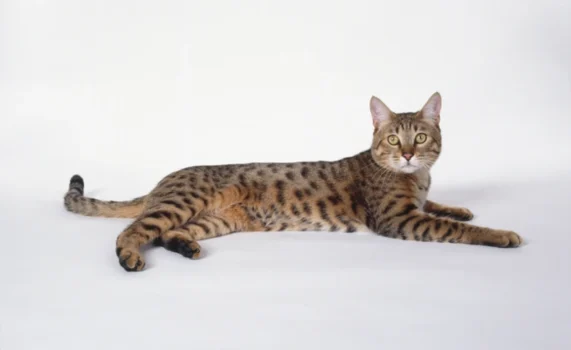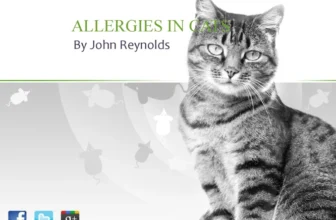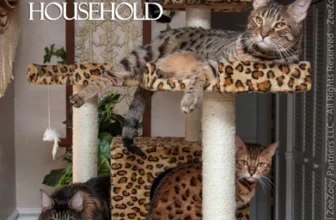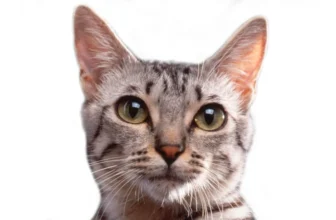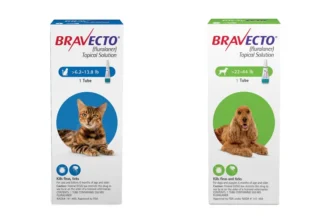As a California Spangled cat owner, you want to ensure that your furry feline friend stays healthy and protected against diseases. Vaccinations are an essential part of maintaining your cat’s health, but the recommended schedule and types of vaccines can be overwhelming to navigate. With so many factors to consider, it’s natural to feel a bit perplexed about where to start. But fear not, we’re here to help! In this article, we’ll walk you through the recommended vaccination schedule for California Spangled cats, including core and optional vaccines, factors that affect the schedule, and how to prepare for your cat’s vaccinations. By the end of this guide, you’ll feel confident in providing your California Spangled cat with the best possible care and protection.
Importance of Vaccinations for California Spangled Cats
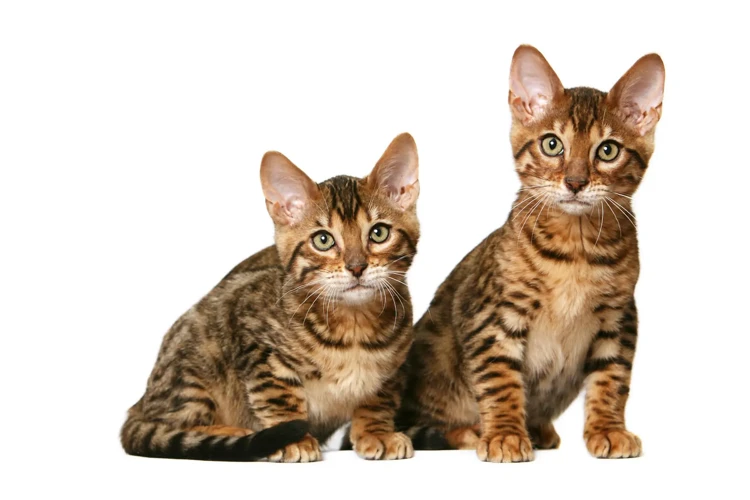
Keeping your California Spangled cat healthy and protected is of paramount importance, and vaccinations play a crucial role in ensuring their well-being. Vaccinations are an essential part of preventative health care for your feline friend. By getting your cat vaccinated, you can protect them from a range of serious and life-threatening illnesses. Not only does vaccination protect your beloved pet, but it also keeps other cats and humans safe from diseases. In this article, we will discuss the importance of vaccinations for California Spangled Cats, the core and optional vaccines, and the factors that affect the vaccination schedule for your pet. We will also outline the recommended vaccination schedule and provide tips on how to prepare your cat for a vet visit. Let’s dive in and learn more about vaccinations for California Spangled Cats.
1. Protection From Serious Diseases
Getting your California Spangled cat vaccinated is essential for their overall health and well-being. One of the primary reasons you should get your cat vaccinated is to provide them with protection against serious diseases.
Some of the most common diseases that California Spangled cats can be protected against through vaccination include:
- Calicivirus.
- Feline Herpesvirus (FHV-1).
- Panleukopenia (FPV or Feline Distemper).
- Rabies.
- Feline Leukemia Virus (FeLV).
- Chlamydia felis.
These diseases can be fatal if left untreated and can lead to the following:
- Fever and dehydration
- Weight loss and appetite loss
- Respiratory and eye infections
- Paralysis and seizures
- Organ failure or even death
Vaccination is the best way to protect your California Spangled cat from these serious diseases. Cats who are not vaccinated are at high risk for contracting these diseases and suffering from their devastating effects. It’s important to make sure that your cat is vaccinated according to a recommended vaccination schedule, which can be found on our website at ca-spangled-cat-vaccination-schedules. By getting your cat vaccinated properly, you are ensuring that they will be protected from these otherwise deadly illnesses.
2. Fulfilling Legal Requirements
Fulfilling legal requirements is another important reason why you should vaccinate your California Spangled Cat. In many states, including California, it is mandatory for pet owners to get their cats vaccinated against certain diseases, including rabies. In order to comply with the law, you will need to keep your cat’s vaccination records up to date.
Table: Legal Vaccination Requirements for California Spangled Cats
| Vaccine | Legal Requirement | Recommended Frequency |
|---|---|---|
| Rabies | Mandatory | Annually or every three years, depending on vaccine type and local laws |
| Feline Distemper (FVRCP) | Not mandatory, but highly recommended | Every 3-4 weeks for kittens until 16 weeks old, then boosters every 1-3 years depending on local laws and risk factors |
| Feline Leukemia (FeLV) | Not mandatory, but highly recommended for outdoor cats or those living with FeLV-positive cats | First two doses 2-4 weeks apart, then boosters annually or every three years depending on vaccine type and local laws |
| Chlamydia felis | Not mandatory, but recommended for cats at risk of infection | Annually or as recommended by the veterinarian |
| Feline Infectious Peritonitis (FIP) | Not mandatory, but recommended for cats at risk of infection | Depends on vaccine type and local laws; may require boosters every 6-12 months |
| Feline Immunodeficiency Virus (FIV) | Not mandatory, but recommended for outdoor cats or those living with FIV-positive cats | Two doses 2-4 weeks apart, then boosters annually or as recommended by the veterinarian |
As you can see from the table, rabies vaccine is mandatory in California, and failing to vaccinate your cat can result in legal consequences. In addition to rabies, the other core vaccines (FVRCP and FeLV) are also highly recommended by veterinarians and public health officials. Though not mandatory, getting your cat vaccinated against these diseases can protect them from serious illnesses and reduce the risk of spreading diseases.
By getting your California Spangled Cat vaccinated, you not only comply with the legal requirements, but also ensure your cat’s safety and well-being. It is important to follow the vaccination schedule recommended by your vet, and keep your cat’s medical records up to date. For more information on California Spangled Cat vaccination, you can check out our comprehensive guide on Cali Spangled Cat Vaccination, which includes a list of common vaccines used in California Spangled Cat vaccination schedules.
Core Vaccines for California Spangled Cats
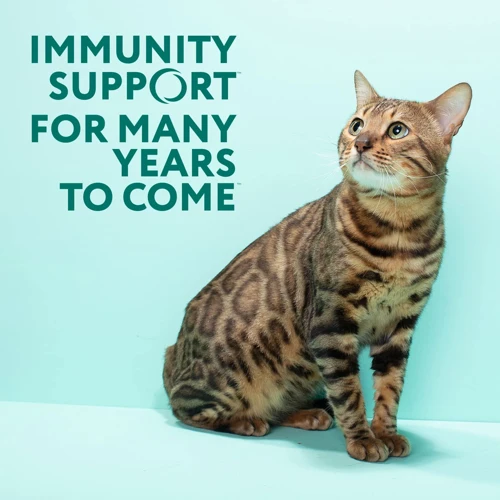
As a California Spangled cat owner, it’s important to know the core vaccines that are crucial for your feline’s health. These vaccines protect your cat from some of the most common and severe diseases that this breed may encounter. Whether you have a kitten or an adult cat, understanding the core vaccines and their benefits can help ensure that your cat lives a happy and healthy life. Let’s take a closer look at the essential vaccines for your California Spangled cat’s well-being.
1. Feline Distemper (FVRCP)
Feline Distemper, also known as Feline Viral Rhinotracheitis, Calicivirus, and Panleukopenia (FVRCP), is a core vaccine that is highly recommended for California Spangled Cats. This vaccine protects against three different highly contagious respiratory diseases. Let’s take a closer look at each of these diseases and the benefits of vaccinating your cat against them:
– Feline Viral Rhinotracheitis: This is a very contagious respiratory infection caused by the feline herpes virus. Cats can easily catch this virus by coming into contact with an infected cat’s saliva, nasal secretions, or eye discharge. Symptoms include sneezing, coughing, runny nose, and fever. Severe cases can lead to pneumonia or even death.
– Calicivirus: Another highly contagious respiratory infection, calicivirus is caused by a virus that is transmitted through direct contact with an infected cat’s saliva, nasal secretions, or eye discharge. Symptoms include fever, runny nose, ulcers on the tongue and mouth, and limping syndrome. In severe cases, calicivirus can lead to pneumonia or death.
– Panleukopenia: Also known as feline distemper, this is a highly contagious and deadly viral infection that attacks the cat’s immune system, causing white blood cells to drop to dangerous levels. Infected cats can contract this virus by coming into contact with contaminated feces, urine, or objects like food bowls or litter boxes. Symptoms include vomiting, diarrhea, fever, loss of appetite, and lethargy. In severe cases, panleukopenia can lead to dehydration, anemia, and death.
Vaccinating your California Spangled Cat against FVRCP is crucial for protecting their health and preventing the spread of these deadly diseases. Consult with your veterinarian to determine the best vaccination schedule for your cat.
2. Rabies
Rabies is a serious and fatal viral disease that affects many mammals, including California Spangled Cats. It is transmitted through the bite or scratch of an infected animal and can even be transmitted to humans. It attacks the nervous system and can be deadly if not treated in time. That’s why vaccinating your California Spangled Cat against rabies is essential for their health and your safety.
Here are a few key facts about rabies vaccination:
- Rabies vaccination is required by law in most states, including California.
- The first rabies vaccine should be given to your kitten when they are around 3-4 months of age.
- After the initial vaccine, a booster shot should be given 1 year later, and then every 3 years after that.
- Vaccines offer protection against all strains of rabies, including the most common variant found in the United States.
- Vaccinated cats who come into contact with a rabid animal are less likely to contract the disease or have milder symptoms if they do.
- Rabies vaccination is safe and effective for most cats, but like any vaccine, there can be side effects.
- Some side effects of rabies vaccination can include fever, lethargy, and swelling at the injection site.
- If your cat is experiencing severe side effects, consult your veterinarian immediately.
In short, vaccinating your California Spangled Cat against rabies is essential for their health and your safety. By following the recommended vaccination schedule and taking your kitten to the vet for regular check-ups, you can help protect them from this deadly disease. Don’t leave their health to chance – make sure your cat is up-to-date on their rabies vaccinations.
3. Feline Leukemia (FeLV)
Feline Leukemia (FeLV) is a viral infection that can be fatal for California Spangled Cats. It is highly contagious and can lead to various health problems, including cancer, anemia, and immunodeficiency. FeLV is transmitted through bodily fluids, including saliva, urine, and blood.
To protect your California Spangled Cat from FeLV, it is recommended to vaccinate them against the virus. The vaccination is safe and highly effective. The vaccine works by stimulating the immune system to produce antibodies against the virus.
Some factors that can increase the risk of FeLV in California Spangled Cats include exposure to infected cats, living in multi-cat households, and being an outdoor cat.
It is important to note that even if a California Spangled Cat receives the FeLV vaccine, it is not a guarantee that they won’t contract the virus. However, the vaccine does provide significant protection and reduces the severity of the symptoms.
The recommended vaccination schedule for FeLV in California Spangled Cats depends on the age and health of the cat. Kittens are usually vaccinated against FeLV when they are around 8-10 weeks old, with a booster shot given 3-4 weeks later. Adult cats that have never been vaccinated against FeLV should receive two doses of the vaccine 3-4 weeks apart.
Vaccinating your California Spangled Cat against FeLV is highly recommended to protect them from this potentially fatal virus. If you notice any symptoms such as fever, weight loss, or reduced appetite, contact your veterinarian immediately. Early detection and treatment can significantly improve the outcome for your furry friend.
4. Chlamydia felis
Chlamydia felis is a bacterial infection that can affect the respiratory system of California Spangled cats. This infection is highly contagious and can easily spread from one cat to another. It is essential to include this vaccine in your cat’s vaccination schedule if your cat has access to other cats or has recently been adopted from a shelter.
Here are some key points to know about the Chlamydia felis vaccine:
- The vaccine is safe and effective at preventing the bacterial infection from spreading to other cats.
- The vaccine is usually administered in combination with the Feline Distemper (FVRCP) shot.
- It is recommended to consult with your vet to determine if your cat requires the Chlamydia felis vaccine or not.
- Cats that have an active respiratory infection or show signs of an allergic reaction should not receive the vaccine until they have fully recovered.
- Like most vaccines, your California Spangled cat may experience mild side effects such as lethargy or a slight appetite loss. These side effects should resolve on their own within a day or two.
If you are unsure whether the Chlamydia felis vaccine is suitable for your California Spangled cat, it is recommended to speak with a veterinarian. They can provide expert advice tailored to your cat’s specific needs and ensure that your cat is protected against serious illnesses and diseases.
Optional Vaccines for California Spangled Cats
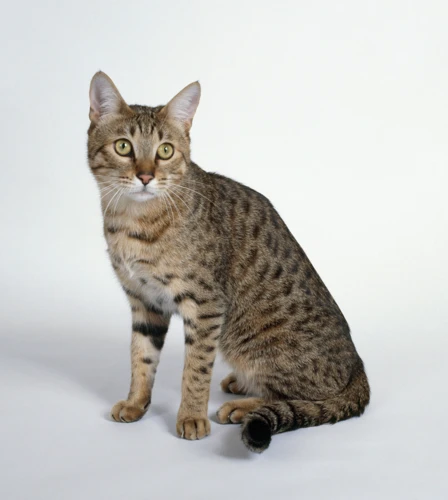
As responsible pet owners, we always strive to provide the best care possible for our furry companions. In addition to core vaccinations, there are other vaccines that can offer further protection to your California Spangled cat. While these vaccines are considered optional, they may be recommended based on your cat’s lifestyle and risks. Let’s dive into the different optional vaccines available for California Spangled cats and what they offer.
1. Feline Infectious Peritonitis (FIP)
Feline Infectious Peritonitis (FIP) is a viral disease that affects cats and is caused by a coronavirus. This virus can lead to inflammation of various organs and can be potentially fatal. FIP is most commonly seen in multi-cat households, catteries, and shelters. Here’s everything you need to know about the FIP vaccine.
| How the Vaccine Works: | The FIP vaccine works by stimulating the cat’s immune system to produce antibodies against the virus that causes FIP. |
| Who Should Consider This Vaccine: | The FIP vaccine is recommended for California Spangled cats that are at a higher risk of contracting the disease, such as those living in multi-cat households or catteries. However, it’s important to note that the FIP vaccine is not 100% effective and may not provide complete protection against the disease. |
| Vaccination Schedule: | The FIP vaccine is given as a series of two doses that are administered 3-4 weeks apart. After the initial series, the vaccine is given annually. |
| Possible Side Effects: | As with all vaccines, there is a risk of side effects with the FIP vaccine. The most common side effects include lethargy, mild fever, and swelling at the injection site. In rare cases, more severe side effects may occur. |
It’s important to note that the FIP vaccine is not considered a core vaccination for California Spangled cats, and its use should be discussed with your veterinarian. They can help you weigh the benefits and potential risks to determine if the FIP vaccine is appropriate for your cat’s individual needs.
2. Feline Immunodeficiency Virus (FIV)
Feline Immunodeficiency Virus (FIV) is a viral disease that affects the cat’s immune system. It is more likely to occur in outdoor cats that are in fights with other cats, and according to the American Association of Feline Practitioners, male cats are more prone to FIV than female cats.
What is Feline Immunodeficiency Virus (FIV)?
Feline Immunodeficiency Virus (FIV) is similar to HIV in humans, but it is not transferable to humans. The virus destroys the cat’s immune system, leaving the cat vulnerable to other infections and diseases. It affects cats by attacking their white blood cells, which are responsible for fighting off infections. The virus can also cause anemia, weight loss, and chronic infections.
How is Feline Immunodeficiency Virus (FIV) treated?
There is no cure for Feline Immunodeficiency Virus (FIV), but the symptoms can be treated through medication and care. Antibiotics can help treat infections, and a healthy diet can help boost the cat’s immune system.
Should California Spangled Cats be vaccinated against Feline Immunodeficiency Virus (FIV)?
There is not a definitive answer to this question since the FIV vaccine is not completely effective. The vaccine can produce false positive results for FIV testing and may not provide complete immunity against the virus. It is important to assess the cat’s risk factors for contracting FIV before determining whether to vaccinate them. An outdoor cat with a history of being in fights with other cats may be a good candidate for the FIV vaccine.
| Pros of FIV Vaccination | Cons of FIV Vaccination |
|---|---|
| May provide some protection against FIV for outdoor cats | Vaccine may produce false positive results for FIV testing |
| Can help reduce the spread of FIV in multi-cat households | Vaccine may not provide complete immunity against the virus |
Conclusion
While the FIV vaccine is not completely effective, it can be a viable option for outdoor cats with a high risk of contracting the virus. It is important to assess your cat’s individual risk factors and consult with a veterinarian before making any decisions regarding FIV vaccination.
3. Bordetella Bronchiseptica Vaccine
Bordetella Bronchiseptica is a bacterium that can infect cats causing respiratory problems and coughing. Although it’s more common in dogs, cats can also be affected, especially if they live with or come into contact with other pets. The Bordetella Bronchiseptica vaccine can help protect your California Spangled Cat from this bacterium, reducing the risk of respiratory issues and making sure your cat stays healthy.
How does the Bordetella Bronchiseptica vaccine work?
The Bordetella Bronchiseptica vaccine works by stimulating your cat’s immune system to produce antibodies against the bacterium. These antibodies help to fight off the infection if your cat comes into contact with the bacterium, reducing the severity of any symptoms and speeding up recovery time.
When is the Bordetella Bronchiseptica vaccine recommended?
The Bordetella Bronchiseptica vaccine is typically recommended for cats that have a higher risk of contracting the bacterium. This includes cats that live with or come into contact with dogs, cats in multi-cat households, and cats that regularly spend time in boarding facilities or veterinary clinics. If you’re unsure whether your California Spangled Cat needs the Bordetella Bronchiseptica vaccine, it’s best to speak with your veterinarian.
How is the Bordetella Bronchiseptica vaccine administered?
The Bordetella Bronchiseptica vaccine is given by injection, typically into the muscle of your cat’s hind leg. Depending on your cat’s risk level, your veterinarian may recommend a single initial dose followed by a booster shot 2-4 weeks later. After this, your cat may need a yearly booster to maintain immunity.
Are there any side effects of the Bordetella Bronchiseptica vaccine?
As with any vaccine, there is a risk of side effects. These can include fever, lethargy, and soreness at the injection site. However, the risk of a serious reaction to the Bordetella Bronchiseptica vaccine is very low, and the benefits of vaccination typically outweigh the risks.
If you’re considering getting the Bordetella Bronchiseptica vaccine for your California Spangled Cat, talk to your veterinarian about the risks and benefits. A vaccination schedule tailored to your cat’s individual needs can help keep them healthy and protected from potential illnesses.
| Advantages | Disadvantages |
|---|---|
| Helps protect against Bordetella Bronchiseptica infection | Risk of side effects |
| Reduces risk of respiratory problems and coughing | May not be necessary for all cats |
| Can improve overall health and wellbeing | May require booster shots to maintain immunity |
Factors That Affect Vaccination Schedule for California Spangled Cats
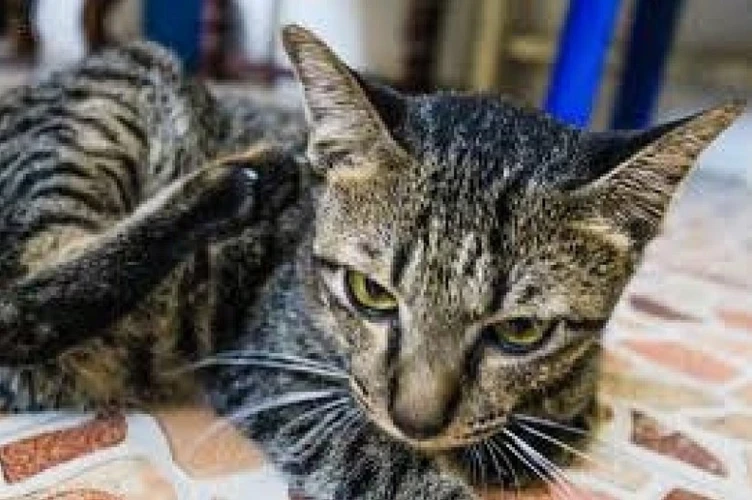
Determining the vaccination schedule for your California Spangled cat can be influenced by various factors. It can be daunting to decide when and what vaccines your feline companion should receive. Heightened consideration should be given to their age, health status, lifestyle, and environment. Understanding these factors that affect their vaccination schedule can help you develop a plan that ensures your cat stays healthy and protected against infectious diseases. Let’s explore how each of these factors can impact their vaccination schedule.
1. Age and Health of the Cat
When it comes to vaccinations for California Spangled cats, their age and health are important factors to consider. Vaccinations are typically administered when cats are young kittens, but booster shots are necessary throughout their lives to maintain immunity. Additionally, the health of the cat is crucial in determining if they should receive certain vaccinations.
Age
Kittens should receive their first round of vaccinations when they are between 6 and 8 weeks old. These early vaccinations help to protect them from serious diseases that they may come into contact with at an early age. Booster shots are then administered at 3-4 week intervals until the kitten is around 14-16 weeks old. After this initial round of vaccinations, booster shots are typically administered on an annual or triennial basis.
Health
The health of the cat is also an important consideration when determining if they are able to receive certain vaccinations. Cats with certain health conditions or a weakened immune system may not be able to receive certain vaccinations. It’s important to consult with a veterinarian to determine if a cat is healthy enough to receive vaccinations and to discuss any potential risks.
To further illustrate how age and health impact vaccination schedules for California Spangled cats, refer to the following table:
| Vaccination Schedule Based on Age and Health | |
|---|---|
| Age | Health |
| Kittens | Generally healthy kittens can receive all core vaccines as recommended by their veterinarian |
| Adults | Cats that are generally healthy and up-to-date on their vaccinations can receive booster shots as recommended by their veterinarian |
| Seniors | Cats with age-related health conditions may require a modified vaccination schedule or not receive all vaccines due to potential risks |
By understanding the age and health of the cat, owners can work with their veterinarians to develop a tailored vaccination schedule that meets their unique needs and helps to protect them from serious diseases.
2. Risk Factors
Before deciding on a vaccination schedule for your California Spangled cat, it’s important to consider the risk factors that may be associated with their lifestyle. Below are some risk factors you should take into account when developing a vaccination plan for your feline friend:
- Exposure to other cats: If your cat is frequently in contact with other cats, whether it’s through attending cat shows, living in a multi-cat household, or spending time outdoors, they may be more susceptible to infectious diseases. As a result, it’s important to make sure they receive all the necessary core vaccines and any optional vaccines that may be necessary based on their level of exposure.
- Travel: If your California Spangled cat travels frequently or has plans to travel with you in the future, it’s important to ensure that they are vaccinated against the diseases that they may come into contact with during their journey. This is especially important if you are traveling to areas where certain diseases are more prevalent.
- Age: Young kittens and older cats may have different vaccination needs based on their age-related health concerns. Kittens, for example, may be more vulnerable to certain infectious diseases and require a different vaccination schedule than adult cats.
- Health status: If your cat is already dealing with a health condition, they may require additional vaccines to protect them against any potential complications or secondary infections. Always consult with your vet if you’re unsure about your cat’s vaccination needs based on their current health status.
- Exposure to wildlife: Cats that spend a lot of time outdoors or are exposed to wildlife may have a higher risk of contracting certain illnesses, such as rabies. In these cases, it’s important to ensure that they receive the right kind of vaccines to protect them against these diseases.
By taking these risk factors into account, you can better understand what vaccines your California Spangled cat will require to protect their health and wellbeing. Remember, always consult with your vet to determine the best vaccination schedule for your furry friend.
3. Indoor vs Outdoor Living
Indoor vs Outdoor Living
One factor that can affect the recommended vaccination schedule for California Spangled Cats is whether they live indoors or outdoors. Outdoor cats are at a higher risk for contracting certain diseases, such as rabies and feline leukemia, than indoor cats.
Here is a breakdown of the risks and benefits of indoor vs. outdoor living for California Spangled Cats:
| Indoor Living | Outdoor Living |
|---|---|
| Less exposure to diseases | Increased risk of exposure to diseases |
| Less exposure to parasites (such as fleas and ticks) | Increased risk of exposure to parasites (such as fleas and ticks) |
| Less risk of getting hit by a car or attacked by another animal | Increased risk of getting hit by a car or attacked by another animal |
| Lower risk of getting lost | Higher risk of getting lost |
It is important to note that even indoor cats can benefit from vaccinations. While their risk of exposure to certain diseases may be lower, there is still a chance they could come into contact with an infected animal or catch a disease from a human. Discussing your cat’s lifestyle with your veterinarian can help determine the best vaccination schedule for your California Spangled Cat.
Vaccination Schedule for California Spangled Cats
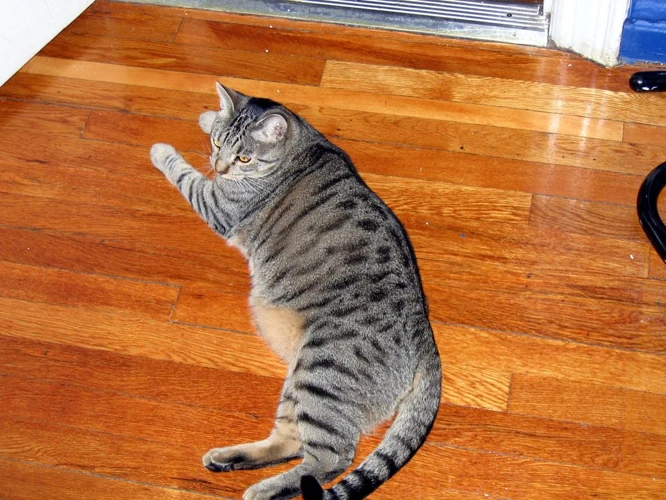
Protecting your California Spangled cat from harmful diseases is crucial to keeping them healthy and happy. Vaccinations are a key part of preventing these illnesses, but it’s important to follow a proper vaccination schedule to ensure maximum effectiveness. The following schedule outlines the recommended vaccinations for California Spangled cats, depending on their age, lifestyle, and other factors. By staying up to date with vaccinations, you can be confident that your beloved feline friend is getting the protection they need to live a long and healthy life.
1. Kitten Vaccination Schedule
When it comes to vaccinating California Spangled kittens, it is important to follow a strict schedule to ensure that they are protected from potentially life-threatening diseases. Here is a recommended vaccination schedule for your California Spangled kitten:
- 6-8 weeks: Your kitten should receive their first FVRCP (Feline Viral Rhinotracheitis, Calicivirus, and Panleukopenia) vaccine. This vaccine is crucial for protecting your kitten from common and serious feline respiratory illnesses.
- 10-12 weeks: Your kitten should receive their second FVRCP vaccine, as well as their first FeLV (Feline Leukemia Virus) vaccine. The FeLV vaccine is important to help prevent your kitten from contracting a virus that can lead to fatal illnesses later in life.
- 14-16 weeks: Your kitten should receive their third and final FVRCP vaccine, as well as their second FeLV vaccine. This will help ensure that your kitten has maximum protection against these dangerous diseases.
- 16-20 weeks: Your kitten should receive their first rabies vaccine. This vaccine is required by law in most states and is important for protecting both your kitten and any humans they may come into contact with from the rabies virus.
It is important to note that this schedule may vary based on your kitten’s individual health needs and risk factors. Always consult with your veterinarian to determine the best vaccination schedule for your California Spangled kitten. By keeping up with their vaccinations, you can help ensure a healthy and happy life for your beloved pet.
2. Adult Cat Vaccination Schedule
As cats grow older, it’s important to keep up with their vaccinations in order to maintain their health. Here is a recommended vaccination schedule for adult California Spangled cats:
- Feline Distemper (FVRCP): Adult cats should receive a booster shot of the FVRCP vaccine every 3 years. This vaccine protects against three serious diseases: feline viral rhinotracheitis, calicivirus, and panleukopenia.
- Rabies: Adult cats should receive a booster shot of the rabies vaccine every 1-3 years, depending on the type of vaccine used. Rabies is a serious and potentially fatal disease that can affect both animals and humans.
- Feline Leukemia (FeLV): Adult cats at risk for leukemia, including those who spend time outdoors or live with other cats who have not been vaccinated, should receive a booster shot of the FeLV vaccine every 2 years.
- Chlamydia felis: A Chlamydia felis vaccine is not typically given to adult cats as they have already built up immunity against this bacterial infection.
It’s important to note that not all adult cats will require all of these vaccines, as the appropriate vaccinations will depend on factors such as the cat’s age, health status, and daily living environment. As always, it’s crucial to talk to your vet about which vaccinations are necessary to ensure your cat remains healthy and protected.
How to Prepare Your California Spangled Cat for Vaccinations
Preparing your California Spangled cat for vaccinations can be a daunting task, but it is a crucial step to ensuring their long-term health and well-being. By taking the right steps beforehand, you can make the experience as stress-free as possible for both you and your feline friend. Here are some tips for getting your California Spangled cat ready for their vaccinations to help make the process go as smoothly as possible.
1. Schedule a Vet Visit
Before you can vaccinate your California Spangled Cat, the first step you need to take is to schedule a visit with your veterinarian. This allows your vet to assess your cat’s health and determine the appropriate vaccination schedule based on various factors.
During your vet visit, you can expect the following:
| Step 1: | Your vet will conduct a thorough physical exam of your cat to ensure they are healthy enough for vaccinations. |
| Step 2: | Your vet will review your cat’s medical history, including past vaccinations, to determine the best vaccination schedule for your cat. |
| Step 3: | Your vet may recommend additional diagnostic tests, such as blood work, to ensure your cat is healthy and to detect any underlying health conditions that could impact the vaccination schedule. |
| Step 4: | Your vet will discuss potential risks associated with the vaccinations and answer any questions you may have about the process. |
By scheduling a visit with your veterinarian, you can ensure that your California Spangled Cat is receiving the appropriate vaccinations based on their unique health needs and medical history. Additionally, your vet can help you prepare for the vaccination process and answer any questions or concerns you may have along the way.
2. Check Your Cat’s Health Status
One of the most important things to do before taking your California Spangled cat for vaccinations is to check their health status. This will ensure that they are strong enough to handle the vaccines and that there are no underlying health concerns that could affect their immune response. Here are some steps you can take to check your cat’s health status:
- Observe their behavior: Keep an eye on your cat’s behavior for a few days leading up to the vet visit. Look for any signs of lethargy, loss of appetite, or vomiting, which could be an indication of an underlying issue.
- Check their weight: Weigh your cat at home using a scale and check that their weight is within the healthy range for their age and breed. A sudden weight loss could indicate an underlying health condition.
- Look for physical abnormalities: Examine your cat’s coat, eyes, ears, and nose for any signs of discharge, swelling, or redness. Check their teeth and gums for any signs of dental problems, which could also affect their overall health.
- Check their vaccination history: Review your cat’s medical records to see if they are up to date on their vaccinations. This will help you and your veterinarian determine which vaccines your cat needs at the current visit.
- Discuss any concerns with your veterinarian: If you notice any changes in your cat’s health or behavior, be sure to discuss them with your veterinarian. They can perform a thorough examination and provide recommendations for treatment if necessary.
By taking the time to check your cat’s health status before vaccinations, you can help ensure that they receive the appropriate vaccines at the appropriate time. This can help keep your cat healthy and protected against common diseases and infections.
3. Bring Your Cat’s Medical Records
As you prepare your California Spangled cat for vaccinations, it’s important to remember to bring their medical records with you to the vet visit. These records will allow the vet to see which vaccines your cat has already received and which they still need.
Why Bring Medical Records?
Bringing your cat’s medical records to their vet visit can help ensure that they receive the appropriate vaccinations and avoid unnecessary shots. It’s essential to have a complete record of your cat’s health history, such as previous illnesses, surgeries, and vaccinations.
What Medical Records to Bring
When bringing your California Spangled cat’s medical records to the vet, it’s crucial to include the following information in an organized and easily accessible format:
| Vaccine Type | Date Administered | Name of Vaccinating Veterinarian |
| FVRCP | 01/01/2020 | Dr. Smith |
| Rabies | 02/15/2020 | Dr. Johnson |
| FeLV | 03/20/2020 | Dr. Thompson |
This table shows the vaccine type, date administered, and name of the vaccinating veterinarian. Please make sure to bring the complete vaccination record for your cat.
Benefits of Bringing Medical Records
Aside from ensuring that your cat receives the appropriate vaccinations, bringing their medical records to the vet can also help identify any health issues that need to be addressed. The vet can compare your cat’s medical history with their current symptoms, leading to a proper diagnosis and prompt treatment if necessary.
It’s essential to bring your California Spangled cat’s complete medical records to their vet visit. It helps ensure proper vaccination and prompt diagnosis and treatment of any health issues. Don’t forget to keep your cat’s vaccination records up to date and in a safe place for easy access.
4. Prepare Your Cat For The Visit
It is important to properly prepare your California Spangled cat for their vaccination visit to ensure a stress-free experience for both you and your feline friend. Here are some tips to follow before the appointment to make sure everything goes smoothly.
| Suggestion | Description |
|---|---|
| Fast The Night Before | It is recommended that you withhold food for at least 12 hours before your cat’s appointment. This will minimize the chances of your cat vomiting during the car ride or examination. |
| Bring Treats | Bringing some of your cat’s favorite treats can help make the experience more positive and can serve as a distraction during the examination. |
| Use a Carrier | When traveling to the veterinarian’s office, it is important to use a secure carrier to transport your cat safely. Place a familiar blanket or toy of the cat’s in the carrier to make them feel more comfortable. |
| Stay Calm | Cats can pick up on their owner’s stress levels, so it is important for you to remain calm and relaxed during the entire appointment. This can help your cat stay calm as well. |
| Plan Ahead | It is important to plan ahead and make sure enough time is allotted for the appointment. Rushing can cause added stress and increase the chances of your cat becoming agitated. |
By following these suggestions, you can help ensure that your California Spangled cat has a positive vaccination experience. Remember to always consult with your veterinarian with any questions or concerns you may have.
Conclusion
As a responsible pet owner, it is crucial to ensure that your California Spangled cat is up to date on their vaccinations. Vaccinations provide a vital shield of protection against potentially deadly diseases, fulfilling legal requirements, and ensuring overall health and wellbeing.
There are core vaccines that every cat should receive, including the Feline Distemper (FVRCP) and Rabies vaccines. Other optional vaccines, such as the Bordetella Bronchiseptica vaccine, can offer additional protection against specific diseases.
Factors such as your cat’s age, health status, and living environment can all influence their vaccination schedule. Your veterinarian can work with you to determine the best vaccination plan for your California Spangled cat.
When preparing for your cat’s vaccinations, it’s important to schedule a vet visit, check your cat’s health status, and bring their medical records with you to the appointment. You can also help prepare your cat for the visit by familiarizing them with their carrier and reducing stress levels.
In conclusion, keeping your California Spangled cat up to date on vaccinations is crucial for their overall health and wellbeing. Work with your veterinarian to determine the best vaccination plan for your pet, and take steps to prepare for their vaccination appointments to ensure a stress-free and successful visit.
Frequently Asked Questions
1. Can California spangled cats receive human vaccines?
No, human vaccines are specifically designed for humans and are not suitable for cats.
2. Do I need to vaccinate my indoor California spangled cat?
Yes, indoor cats are still at risk of contracting diseases and should be vaccinated accordingly.
3. When should I start vaccinating my California spangled kitten?
Kittens should start receiving their vaccinations at around 6-8 weeks old.
4. Can my California spangled cat have an adverse reaction to vaccinations?
It is possible for cats to have an adverse reaction to vaccinations, but it is rare. Your vet can discuss potential risks and monitor your cat for any reactions.
5. Can I skip certain vaccines for my California spangled cat?
You should discuss any concerns with your vet, but it is generally recommended to follow the recommended vaccination schedule for the best protection against diseases.
6. How often do I need to vaccinate my California spangled cat?
The frequency of vaccinations depends on the specific vaccine and your cat’s lifestyle. Your vet can provide a personalized vaccination schedule for your cat.
7. Is the rabies vaccine required by law in California?
Yes, the rabies vaccine is required by law for all cats in California over the age of 4 months.
8. Can my California spangled cat receive multiple vaccines at once?
Yes, it is common for cats to receive multiple vaccines in one visit to the vet. Your vet can discuss any potential risks and monitor your cat for any reactions.
9. How effective are vaccinations for California spangled cats?
Vaccinations are highly effective in protecting cats against serious diseases. However, no vaccine is 100% effective.
10. Can my California spangled cat still get sick after being vaccinated?
It is possible for cats to still get sick after being vaccinated, but the severity of the illness is generally reduced. Vaccinations are not a guarantee against illness, but they greatly reduce the risk.

